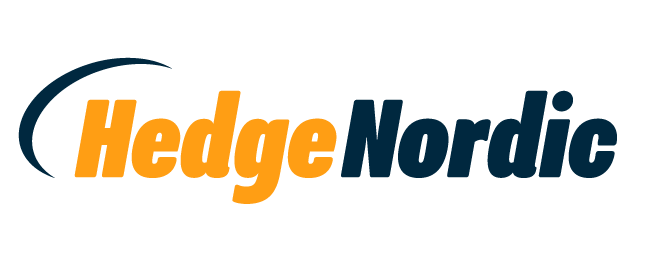Prenumeration
Stockholm (HedgeNordic) – With a wealth of experience in value creation gained from his tenure at McKinsey and later in private equity at SEB, fund manager Emilio Dauvin has long recognized the potential of activist and private equity players to create value. In 2020, after an extensive career overseeing different investment mandates and funds at SEB, he spun out one of the successful strategies he had managed at SEB, the Being and Investment Active Value Fund. This concentrated long-only strategy, implemented at SEB since 2010, targets public companies with private equity and activist players as minority shareholders.
Structured today as a Swedish Special Fund (AIF), Being and Investment Active Value Fund is designed to represent a cheaper, more liquid, and nimble alternative to investing in companies undergoing transformation through the actions of activist or private equity players. “We are fishing where there’s fish, which allows us to maintain a leaner organization and have lower costs,” explains Dauvin. “Our high net worth share class costs half as much as those charged by private equity and activist firms.” This cost efficiency is achieved because “activist investors must commit substantial resources to cover many sectors and individual companies, effectively ‘boiling the ocean’ to find cases and drive change. We, on the other hand, adopt a more project-led approach by concentrating solely on pre-vetted cases.”
Unlike activist and private equity investors, who often have limited flexibility in adjusting their exposure to investments, Dauvin’s fund has the opportunity to rebalance in, out, and around positions to capitalize on market volatility. For instance, their investment in British education company Pearson, in which Swedish activist investor Cevian Capital is involved, yielded a 90 percent return during about two years through rebalancing, compared to just 70 percent for a buy-and-hold position. “We tracked how much our rebalancing adds to our portfolio value compared to a buy-and-hold approach,” notes Dauvin, estimating that their rebalancing activities contributed around 40 percent to the total return on of the portfolio between 2020 and 2022. “Rebalancing is really adding value.”
Three Main Styles
Both activist investors and private equity investors employ various styles and strategies to achieve their objectives when engaging with companies. “There’s a lot of different private equity firms that have their different styles,” reiterates Dauvin, who runs the fund alongside two former McKinsey & Company colleagues, Mihai Gherman and Eskil Sylwan, and a former Lynx Partner and portfolio manager, Anders Holst. Recognizing the diverse styles and strategies, Dauvin categorizes them into three main groups.
The first group, exemplified by investors like Apollo, adopts conservative approaches by focusing on value, cash-flow fundamentals, and conservative leverage. The second group, represented by investors such as ValueAct, brings a tech-focused perspective to traditional businesses, driving transformations through technological innovation. Activist investor ValueAct has been involved in Adobe’s textbook case of a conversion to a subscription model by discontinuing the sale of boxed versions of its Photoshop and other design software. “The US has an enormous capability of transforming their businesses with the use of technology,” says Dauvin. “I like this group of investors who recognize this potential and help companies on that transformation.”
The third group, comprising cost-cutting players, emphasizes efficiency and simplicity by focusing on core businesses, to streamline operations and boost margins. “I’m particularly interested in tech-focused and cost-cutting transformations because it’s quite easy to put an analytical framework around them,” notes Dauvin. One can readily assess margins and compare them to those of other competitors.
“In all our investments, our two-pillar method to create returns involves two things: first: identifying value, and second: identifying the element of value creation,” says Dauvin. “This can take many forms but often involves implementing cost-cutting measures or accelerating gross profit margin improvement by repositioning the company through new products, business models, etc.,” he elaborates. “The combination of leveraging technology and transitioning from complexity to simplicity is often crucial in our investments.”
Best Ideas from Best Investors
In essence, Dauvin’s strategy involves “handpicking a select few of the best investors in the world and constructing a focused portfolio with some of their finest investments, where we dynamically adjust our allocation to each case depending on where the case stands.” Being and Investment Active Value Fund typically maintains a concentrated portfolio of around ten to twelve investments, with a typical investment horizon spanning three to five years.
Dauvin employs a rebalancing approach based on each case’s performance and remaining return potential. “Everything else equal, if one stock moves up, we sell and buy in the ones that have gone down,” explains Dauvin. “Markets can be irrational short term. For some periods of time, the activist and the value-creating component might be forgotten by Mr. Market,” he adds, emphasizing rebalancing as a key tool for enhancing returns.
Effectively managing this portfolio, including the rebalancing, requires “a very deep understanding of what each company is doing, where the company is going, how it’s tracking against the original value creation plan, and how attractively valued the company is, at each point in time,” Dauvin emphasizes. “We strive to identify and quantify the value creation plan in each investment and we work through a hypothesis-driven methodology to be as effective as possible,” he elaborates. Once this process is concluded and the investment is made, “we conduct continuous due diligence on each case to enable tactical adjustments.”
Dauvin concludes by saying that there are essentially two primary avenues for long-term investment success. “Firstly, acquiring assets worth 100 for less than 100, effectively profiting from the seller’s loss,” says Dauvin. “And the second way is that once I bought something, I make the 100 worth more,” he elaborates. “We are trying to capture those two things by putting on our ‘Warren Buffett’ glasses to find value amongst activist cases with robust value creation stories.”

